Seasonal Lawn Care Guide for Large Yards in Western Canada
Reading time: 5 - minutesOwn a big yard? Gorgeous.
Maintaining a big yard? Umm, less glamorous.
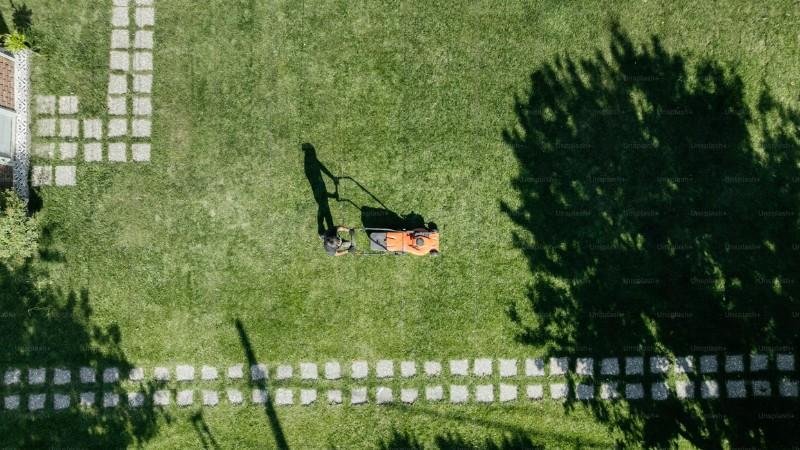
When you've got acres of turf to care for, every bit of lawn care can start to feel like a second full-time job. Between mowing marathons, weed battles, and seasonal surprises, keeping a large lawn healthy year-round is no small feat.
But there are ways you can make the impossible a little less so.
We’ve put together a seasonal guide that breaks down what your lawn needs (and when), so you can stay ahead of the chaos.
TL;DR: Caring for a large lawn in Western Canada means staying on top of seasonal tasks:
- Spring: Rake, aerate, overseed, fertilize, and tackle early weeds.
- Summer: Mow high, water deeply, manage pests, and avoid stressing your lawn during heat waves.
- Fall: Aerate again, overseed, fertilize, clear leaves, and winterize systems.
- Winter: Monitor for snow mould, trim damaged branches, and plan ahead for spring.
For multi-acre properties, break your lawn into zones and use the right equipment. Or skip the hassle altogether and get professional lawn care to do the task for you (Green Drop’s estate service handles it all).
Spring Lawn Care for Large Lawns

Winter was rough, but your lawn’s ready to stretch, shake off the frost, and get growing.
Here’s what should be in your spring to-do list:
- Rake out winter debris and dead grass (thatch). This clears the way for sunlight, air, and new growth.
- Aerate compacted soil. A winter’s worth of snow and foot traffic leaves your soil gasping for air. Core aeration opens it back up.
- Overseed bare or thin areas. Spring is the perfect time to fill in trouble spots before weeds claim them.
- Apply a balanced spring fertilizer to give your lawn a nutrient kick-start to jump into growth mode.
- Start your weed control plan by targeting broadleaf weeds early, before they get too comfortable.
- Inspect and adjust your irrigation system. Check for clogs, misaligned sprinkler heads, or zones getting too much (or too little) water.
- Prune winter-damaged shrubs and trees. This should happen in early spring. Clean cuts promote healthy spring regrowth and keep your landscape looking sharp.
- Edge garden beds and walkways. Clean, defined edges give your landscape instant polish and keep grass from creeping where it shouldn’t.
- Top-dress low areas using compost or quality topsoil to level uneven spots and improve turf density in problem zones.
Summer Lawn Care for Large Lawns
The grass is growing, the weeds are…well, scheming…and the sun is relentless. Summers are all about maintenance and mitigation.
Here’s your summer to-do list:
- Mow high (2.5–3 inches) to protect roots, conserve moisture, and create shade for the soil. Short grass = stressed grass with shallow roots.
- Water deeply and early in the morning. Aim for 1–1.5 inches per week, including rainfall, to encourage deep, resilient root systems.
- Spot-treat weeds before they get out of hand. Catching them early saves hours, and prevents seed spread across large areas.
- Watch for pests like grubs and chinch bugs, especially in yellowing or spongy patches that don’t bounce back after watering.
- Apply a summer-safe fertilizer or SoilBooster™, which feeds the soil without stressing grass during peak heat.
- Inspect edges, walkways, and retaining walls for heat-related cracks, lifting, or soil erosion that can affect lawn borders.
- Check irrigation coverage regularly. Hot spots, dry patches, or puddles often signal misaligned or clogged sprinkler heads.
- Don’t mow during extreme heat or drought. Let the lawn rest when temps soar above 30°C to prevent stress.
- Limit foot traffic on stressed grass, especially in high-traffic zones like play areas or walkways to avoid compaction.
- Watch for signs of fungus, like powdery patches, brown rings, or discolouration that worsens after humid or rainy nights.
Fall Lawn Care for Large Lawns
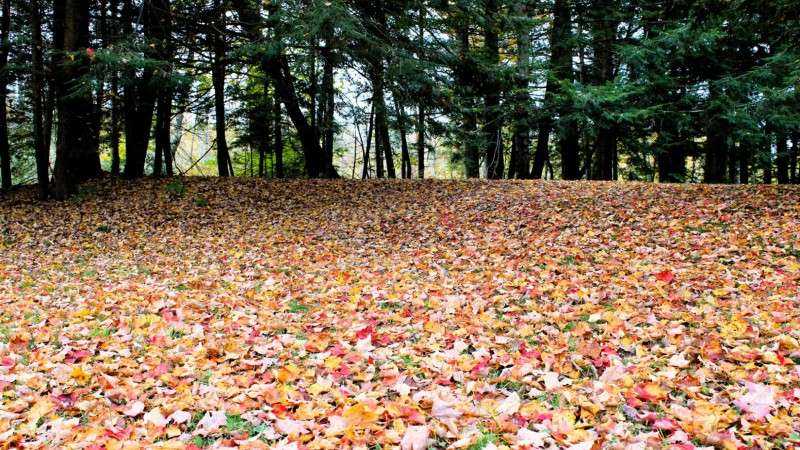
For large properties, fall is the season where you set the stage for a healthy, head-start in spring.
Here’s your fall to-do list:
- Core aeration to relieve summer compaction. Opens up the soil so air, water, and nutrients can reach the roots.
- Overseed again for thick spring growth. Fall is ideal for seed-to-soil contact and root establishment.
- Apply a fall fertilizer to strengthen roots and prep for winter stress.
- Remove leaves regularly. Thick layers smother your lawn and invite snow mould.
- Winterize irrigation systems. Drain lines, blow out sprinklers, and avoid costly pipe bursts.
- Trim trees and shrubs. Helps prevent snow damage and keeps branches from scraping buildings or blocking paths.
- Give your lawn a final mow. Lower the blade slightly, but don’t scalp. Aim for 2–2.5 inches.
- Top-dress thin areas. A thin layer of compost or topsoil boosts soil health and seed success.
- Edge lawn borders and beds. Crisp edges make spring clean-up easier and your fall yard look finished.
- Inspect drainage around structures. Make sure water flows away from foundations and doesn’t pool on turf.
Winter Lawn Care for Large Lawns (Even When It’s Dormant)
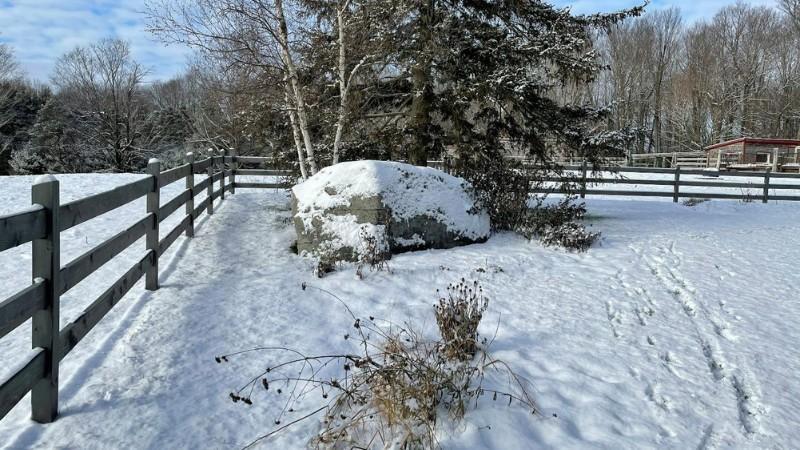
Not a lot is happening now, and most of the time, you’re just going to leave your lawn along, but here’s what you need to keep an eye out for:
- Watch for signs of snow mould. On those random chinooks, look for grey or pink patches (this is snow mould) so once spring rolls in, you know you need to act fast.
- Inspect trees and large shrubs. Winter storms can break limbs, remove damaged branches before they become hazards.
- Check fences and edging. Frost heave can shift hardscapes, leading to spring surprises.
- Avoid using harsh de-icers. Stick with turf-safe products.
- Keep heavy equipment off frozen turf. Vehicles or snow blowers can leave ruts or damage roots below the surface.
- Plan ahead. Use downtime to schedule your spring services or request a free Green Drop lawn consultation.
What’s the Best Way to Manage Lawn Care on a Multi-Acre Property?
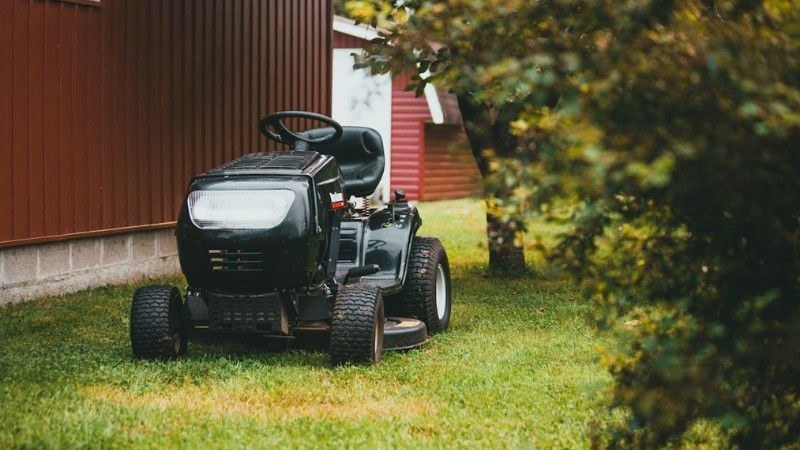
Managing a large property starts with dividing your lawn into zones based on sun, shade, slope, and soil type. This lets you adjust watering, seeding, and treatments more precisely.
Use ride-on equipment for mowing and aeration to save time and reduce fatigue. Schedule tasks seasonally by zone. Don’t try to tackle everything at once.
Install smart irrigation controllers to customize water delivery across different areas. And most importantly, track what’s been done where. Even a simple spreadsheet or lawn journal helps avoid over- or under-treating.
Big Yard, Bigger To-Do List But You Don’t Have to Tackle It Alone
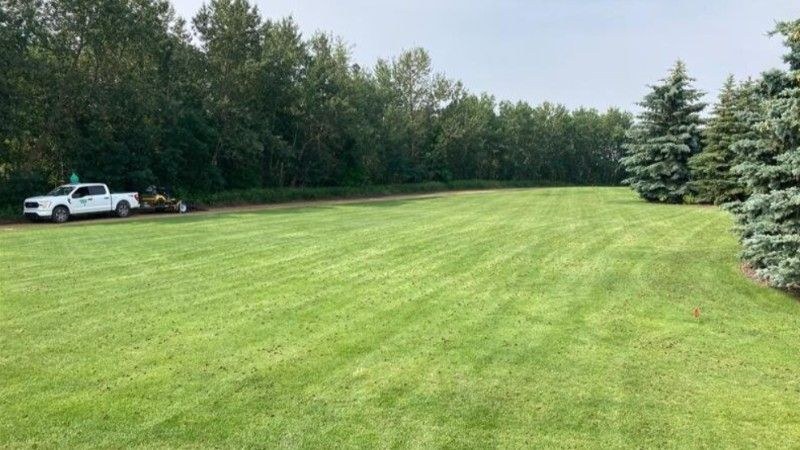
What works on a standard lawn won’t always cut it when you’re dealing with multiple zones, microclimates, or acres of turf. Large lawns often have varying soil conditions, different sun exposures, and unique irrigation needs across sections. One-size-fits-all solutions can actually do more harm than good. That’s why it’s important to think in zones, not just square footage.
That’s where Green Drop’s estate management service steps in where we take care of large lawns. Whether you’re managing a sprawling residential property or a multi-acre commercial site, our expert GreenKeepers handle everything from lawn care, fertilization, weed control, and more.
Ready to simplify large lawn care? Book your free estate consultation today and see how hands-free lawn health really looks.
Got a lawn bigger than 4,000 sqft?

